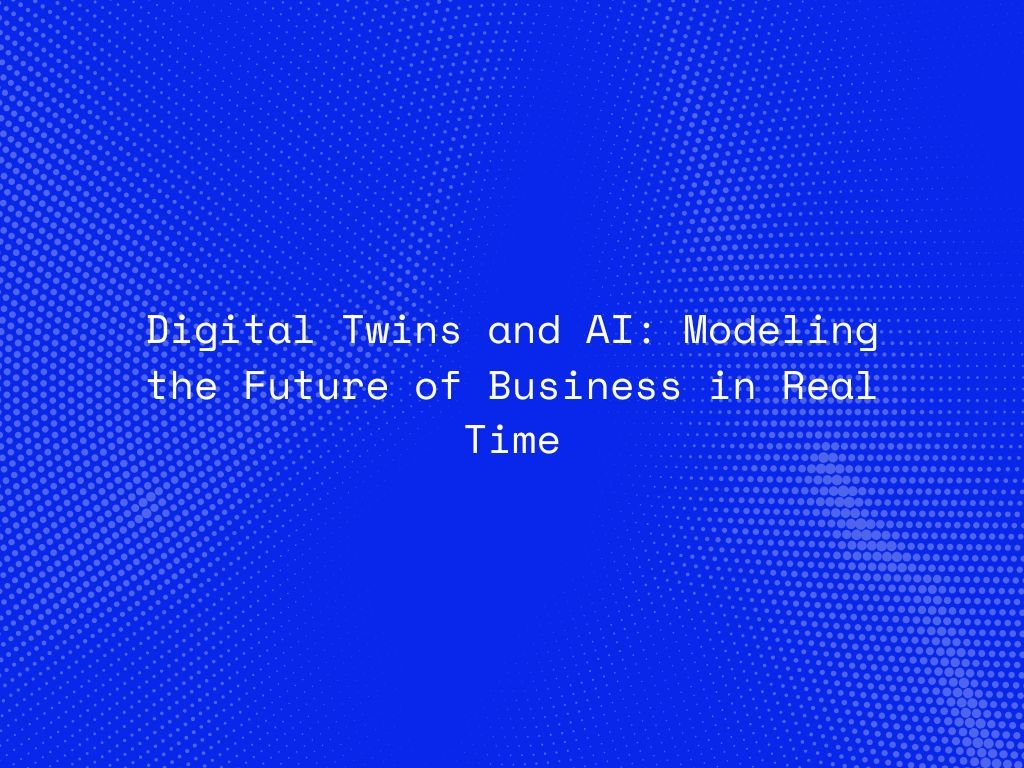In today’s fast-paced digital economy, businesses must navigate growing complexity, real-time demands, and relentless competition. Enter digital twins powered by AI—a transformative solution helping organizations visualize, simulate, and optimize operations like never before.
What once began as a concept for modeling physical assets in manufacturing has now evolved into a core strategy for enterprise agility, innovation, and resilience. Digital twins, when integrated with artificial intelligence, enable businesses to mirror their processes in real time, simulate scenarios, and make smarter, faster decisions.
In this article, we explore how digital twins and AI are converging to revolutionize industries—and why they’re becoming essential for the future of intelligent business.
What Are Digital Twins?
A digital twin is a virtual replica of a physical object, process, system, or even an entire organization. These dynamic models are continuously updated using real-time data from sensors, IoT devices, and enterprise systems.
When infused with AI and machine learning, digital twins go from being passive representations to intelligent systems that can:
Simulate future outcomes
Detect anomalies
Optimize performance
Automate decisions
Essentially, AI transforms digital twins from mirrors into active agents of insight and action.
The Role of AI in Digital Twins
Without AI, digital twins are static or reactive. With AI, they become proactive and predictive.
Here’s how AI enhances digital twin functionality:
1. Real-Time Analytics and Insights
AI processes streams of data in real time, turning raw inputs into insights. This enables digital twins to reflect the current state of assets or processes and provide actionable intelligence.
2. Predictive Modeling
AI models can forecast performance, wear and tear, or system failures. In industries like aviation or manufacturing, this enables predictive maintenance, reducing downtime and extending equipment life.
3. Scenario Simulation and Optimization
Digital twins powered by AI can simulate “what-if” scenarios—such as demand surges, supply chain disruptions, or environmental changes—and recommend optimal responses.
4. Autonomous Decision-Making
As models evolve, AI-enabled digital twins can begin making decisions autonomously, such as rerouting shipments, adjusting production schedules, or reallocating energy resources.
Use Cases Across Industries
Manufacturing
Smart factories use digital twins to model entire production lines.
AI predicts equipment failures and schedules preventative maintenance.
Process optimization reduces waste and increases efficiency.
Healthcare
Patient-specific digital twins model organs or systems for personalized care.
AI analyzes real-time vitals to predict complications and recommend treatments.
Urban Planning & Smart Cities
Digital twins of cities model infrastructure, energy use, traffic, and more.
AI helps optimize traffic flow, emergency response, and energy distribution.
Retail and E-Commerce
Twins simulate customer behavior, inventory, and logistics.
AI recommends pricing strategies and fulfillment adjustments in real time.
Energy Sector
Power plants and grids use digital twins to monitor system health.
AI predicts load requirements, optimizing for cost and sustainability.
Business Benefits of AI-Powered Digital Twins
Improved Decision-Making:
Access real-time, data-driven insights and test outcomes before committing.Operational Efficiency:
Predict failures, optimize processes, and reduce energy or material waste.Reduced Downtime and Costs:
Prevent issues before they occur with predictive analytics.Faster Innovation Cycles:
Rapidly prototype and validate new designs or workflows virtually.Scalability and Flexibility:
Model systems at scale—from single machines to entire ecosystems.Risk Mitigation:
Simulate extreme or rare scenarios without exposing the business to real-world risk.
Challenges and Considerations
Despite the promise, implementing AI-powered digital twins comes with hurdles:
Data integration and quality: Twins are only as good as the data that feeds them.
High initial investment: Building accurate models and integrating AI can be resource-intensive.
Security and privacy: Sensitive operational or customer data must be protected.
Skill requirements: Organizations need both domain experts and data scientists to succeed.
Adoption requires strategic planning, cross-functional collaboration, and a strong digital foundation.
The Future of Digital Twins: AI as the Core Intelligence Layer
As AI models become more sophisticated—through reinforcement learning, multimodal AI, and generative algorithms—digital twins will evolve from operational tools into intelligent collaborators.
Expect future digital twins to:
Continuously learn and self-improve using autonomous AI
Integrate LLMs and natural language interfaces for intuitive human-AI collaboration
Support cross-domain coordination, from supply chains to sustainability planning
Contribute to the rise of Cognitive Digital Twins—entities with reasoning capabilities
By 2030, many forward-thinking enterprises will run entire digital organizations in parallel with their real-world counterparts, powered by AI and governed by adaptive logic.
Conclusion
AI-powered digital twins are not just digital representations—they’re becoming the brains behind next-gen business strategy. They offer the ability to simulate the future, make proactive decisions, and operate with unprecedented efficiency.
In 2025 and beyond, companies that adopt this convergence of AI and digital twins will be better positioned to navigate complexity, respond to change, and lead with intelligence.
Digital twins + AI = Real-time innovation, at scale.




